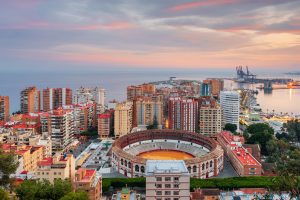
Demand is still driving prices up in Spain
The number of homes sales in Spain increased by 19.4% in July, when compared to the same month in 2023.
The total number of transferred properties in the property registers was 12.2% more than the previous year, at 191,192. Of these, 108,003 were sales, according to figures from the INE.
87.8% of the registered property sales in July corresponded to urban properties, and 12.2% to rural properties. In the case of urban properties, 60.4% were home sales. The number of rural property sales increased by 16.2% in July on an annual basis, and that of urban properties by 17.8%. Within the latter, home sales registered an annual increase of 19.4%.
19.7% of the homes sold in July were new build properties, while 80.3% were second hand. The number of sales of new homes increased by 38.6% compared to July 2023, and that of used homes by 15.5%.
The Autonomous Communities of Navarra (46.9%), Cantabria (23.4%) and Extremadura (21.1%) recorded the highest annual rates of change in July in the total number of properties transferred. Meanwhile, Madrid (1.3%), the Balearic Islands (2.3%) and Andalusia (8.8%) had the lowest annual increases.
As for registered home sales, the communities that showed the highest increases were the Navarra (42.3%), Cantabria (32.1%) and La Rioja (31.6%). Meanwhile, the Balearic Islands (-2.5%) recorded the only decrease.
Prices
Second-hand prices for housing in Spain increased by 1.2% in the third quarter and by 9.5% year-on-year.
The increase seen in September brings the average price of housing for sale to 2,355 euros per square metre.
When we look at the data from just a year ago, Spain has gone from a year-on-year variation of 7% in September 2023 to 9.5% in the same period in 2024. In the last 12 months, the price of housing has gone from €2,151 p/m² in September 2023 to €2,355 p/m² in September 2024.
“The price of housing continues to increase very significantly due to a growing imbalance between supply and demand, especially in the most in-demand areas. The capacity of the real estate market in these areas is becoming increasingly limited, as the available supply is insufficient to absorb the high demand for purchases. This generates considerable upward pressure on prices. The scenario of sustained price increases has persisted over the last two years, coinciding with the increase in interest rates driven by the European Central Bank. However, with the recent moderation of rates, the drop in the Euribor and the improvement in mortgage conditions, the purchase demand that remained paralyzed will likely return to the market with force, which could intensify the pressure on the supply of available homes and continue to drive prices up,” explained María Matos, director of Studies and spokesperson for Fotocasa.
Prices by Community
In the third quarter of 2024 we saw 14 quarterly increases and 17 year-on-year increases. The Community with the highest quarterly increase is the Valencian Community (5.5%), followed by the Balearic Islands (4.1%), Galicia (3.8%), Andalusia (3.4%), Region of Murcia (3.1%), Asturias (3.1%), Canary Islands (3.0%), Cantabria (2.7%), Madrid (1.3%), Basque Country (0.8%), Castilla y León (0.8%), Extremadura (0.6%), Aragon (0.6%) and Castilla-La Mancha (0.2%). The regions where the price of second-hand housing has dropped are Navarra (-1.7%), Catalonia (-0.6%) and La Rioja (-0.5%).
As for the price ranking by communities, the Balearic Islands and Madrid occupy the top positions, and exceed the barrier of 4,000 euros. The price in the Balearic Islands reached €4,428 p/m² and Madrid €4,267 p/m². Both communities reach maximum prices, exceeding previous records. They are followed by the communities of the Basque Country (€3,212 p/m²), Catalonia (€2,830 p/m²), the Canary Islands (€2,659 p/m²), Andalusia (€2,214 p/m²), Cantabria (€2,067 p/m²), Navarra (€2,063 p/m²) and the Valencian Community (€2,014 p/m²). On the other hand, the communities of Extremadura and Castilla-La Mancha are the cheapest (€1,231p/m² and €1,224p/m²).
Provinces
In the provinces of Spain, this third quarter of 2024 showed 38 quarterly increases (76%) and 45 year-on-year increases (90%). The three provinces with the highest quarterly increases are Valencia (6.3%), Lugo (5.9%) and Castellón (5.8%). The three provinces that presented the largest quarterly decreases are Teruel (-7.5%), Soria (-3.5%) and Ávila (-3.3%).
Regarding the price ranking by province, six exceed the €3,000 barrier. The order of the provinces with the highest housing prices is the Balearic Islands (€4,428 p/m²), Madrid (€4,267 p/m²), Malaga (€3,787 p/m²), Gipuzkoa (€3,589 p/m²), Bizkaia (€3,113 p/m²) and Barcelona (€3,084 p/m²).














